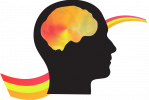By Dr. Cindy McKinzie, PsyD
The death of WWE female wrestling star Ashley Massaro in May is a reminder of the many accomplished athletes who have lost their lives to suicide. Many of these suicides stem from the long-term effects of repetitive head injury which results in a condition called Chronic Traumatic Encephalopathy (CTE).
BMX pioneer Dave Mirra, pro-wrestler Chris Benoit, NFL safety Ray Easterling, Major League Baseball player Ryan Freel, and NFL linebacker Junior Seau are other star athletes who followed a familiar trajectory of noticeable behavior changes: mood swings, impaired thought processes, angry outbursts, chronic pain, substance misuse, and ultimately suicide. War veterans, student athletes, car crash victims, and survivors of chronic domestic abuse may also be diminished by this illness.
Biographical articles and stories that chronicle the lives of these dedicated athletes, veterans, and loved ones usually end with a variation of the hopeless statement that CTE is a degenerative brain disease and there is no cure.
At The Neuroscience Center, however, we believe that there is hope. With earlier detection and intervention, the impact of CTE on people and their loved ones can be significantly reduced and quality of life can be significantly improved.
The Danger of Repetitive Concussions
While the brain may recover from one concussion, there is mounting evidence that the long-term effects of repetitive concussions add up over time. CTE is thought to be the result of these multiple, repetitive injuries to the brain. An example could be the cumulative effect of head blows in active contact sports like football, soccer or boxing. Even if each individual concussion is mild or moderate and may not result in a total loss of consciousness, the cumulative effect of these injures can be critical.
How does CTE occur?
The brain itself is a soft organ, surrounded by fluid, and enclosed in the skull. Its “consistency” is similar to milk-based pudding. A hit to the head, or a concussion, can cause the brain to bang against the skull. This leads to bruising, shearing, and tearing of brain tissue. Following the injury, inflammation, free radicals, reduced blood flow between parts of the brain, and other issues can further impede healing.
Currently, a diagnosis of CTE is confirmed by analyzing brain tissue after death. The brain is examined for a pattern of protein clumps, organized in a characteristic way, that suggests CTE. Based on their analyses, researchers at the Boston University Center for Traumatic Encephalopathy (link here) have identified four stages of CTE. These stages identify outward signs and symptoms that become progressively worse over time.
Stage I
Headaches, attentional difficulties, short-term memory lapses, depression, explosive anger, and aggression.
Stage II
Worsening of headaches, decreased attention/concentration, mood swings, short-term memory loss, and impulsivity. Increasing suicidal thoughts and feelings.
Stage III
Visuospatial difficulties, more extensive memory deficits, apathy, and overall impairment in thinking, reasoning, and logic. More extensive mood swings, aggression, and suicidality.
Stage IV
Significant memory loss and problems w with thinking, reasoning, and logic; problems using language, aggression, depression, paranoia, explosive anger, physical tremors and gait issues, and suicidality. Symptoms are very similar to the various forms of dementia.
Signs and Symptoms: The Impact of CTE
This list of symptoms does not adequately capture the devastation that spreads through the lives of patients and families with CTE. As the condition progresses, it compromises more of the functioning in the frontal lobes needed to make good decisions and the emotional centers of the brain that govern emotions.
People with CTE may become abusive towards loved ones or withdraw from relationships with their partners and children. They may overuse substances, resulting in accidents, legal issues, and incarceration. Some may wind up in hospitals, act-out violently. Others lose income and livelihood. Purpose and meaning slip away. Families feel helpless as they watch a loved one die by overdose or suicide. They are left with the trauma of these tragic events as the disease claims more of their loved one.
What can you do?
If you are noticing behavioral changes in your loved one, particularly depression and mood swings, please don’t wait to seek help. The sooner the symptoms of CTE are recognized and diagnosed, the more we may be able to slow down and possibly reverse the progression of the disease.
At The Neuroscience Center, we begin with comprehensive diagnostics so that we can formulate an accurate diagnosis and treatment plan. This may include:
brain SPECT functional imaging
SPECT imaging helps to evaluate functional status of the brain’s gray matter, and assess for co-morbidity of other illnesses like depression, anxiety, toxin exposure, and many other conditions. We may recommend other neurological and laboratory tests based on a person’s history and needs.
This comprehensive assessment may guide the use of a full spectrum of interventions including:
Hyperbaric Oxygen therapy (HBOT)
This type of therapy delivers highly pressurized oxygen to the brain, to facilitate mitochondrial functioning, stimulate neuronal cell growth, increase blood flow to the brain, reduce neuroinflammation, and promote neuroplasticity.
Perispinal etanercept injections
Etanercept, applied directly into the cerebrospinal venous system, can produce relief of pain, improve motor functioning, improve language functioning, reduce spasms, increase attention and cognitive functioning, improve balance and coordination, reduce frustration, and sometimes improve vision.
Progesterone, other neurosteroids, and other anti-inflammatories
We are skilled in the use of medications which may reduce inflammation, guard against cellular death, encourage neuronal growth, improve cognitive functioning, and reduce pain.
TMS/IV ketamine therapy
Our patented combination of Transcranial Magnetic Stimulation (TMS) with the medication ketamine has been shown to significantly and rapidly reduce depression, anxiety, chronic pain, and suicidal thinking. It is especially effective in cases of substance misuse or head injury.
Nutrition-based management
We offer specialized genetic and nutritional evaluations that identify deficiencies in processing key vitamins, minerals, and nutrients that can lead to impaired brain functioning. We are able to formulate specialized nutritional supplementation plans, including IV nutritional infusions (partial peripheral parenteral nutrition or pppn), to treat and balance the whole body.
General Psychiatry
Our neuropsychiatrist specializes in treatment-resistant illnesses and has been working with patients for nearly 40 years, combining traditional psychiatric medications with innovative treatments.
Learn More about How to Get Help for CTE
If you are interested in treatment for the conditions which lead to CTE, please fill out our patient contact form (put link in here) and we will call you for a free phone consultation.
Not all concussions result in developing CTE. For more information on concussions and post-concussion treatment, click the following links below.
Concussion and TBI (Traumatic Brain Injury)
Post-Concussion and Post-TBI Injury Care
Have questions or concerns for you or a loved one? Please contact our Patient Liaison, Melanie Dillon.






